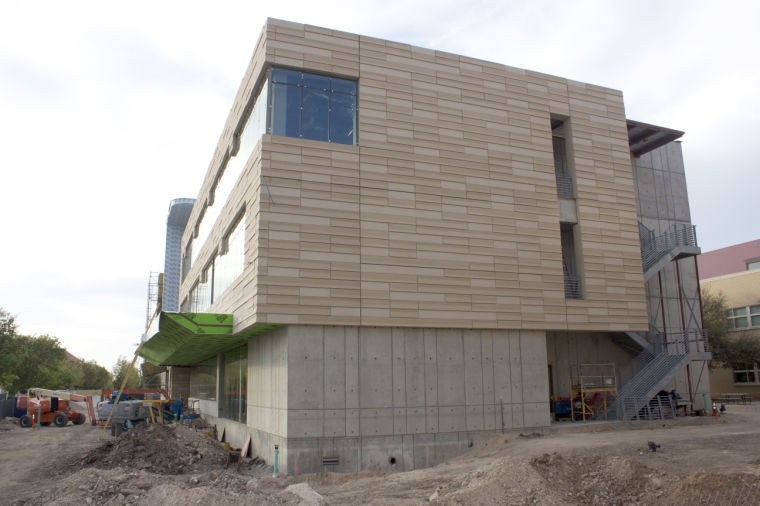Noyce Scholarship encourages science, math majors to teach
In a modern workforce that demands Science, Technology, Engineering and Math, STEM, students, liberal arts schools are finding themselves competing with larger universities for students in these fields. Liberal arts schools, like St. Edward’s University, are those that have a majority of students majoring in traditional arts and sciences fields.
Since 1992, the number of institutions of higher education that are considered liberal arts colleges decreased 39 percent, according an article published in 2012 in the academic journal Liberal Education. A few of the colleges were found to have either closed down or merged with other institutions while the majority made dramatic changes to the curriculum, offering courses beyond the traditional liberal arts fields and even adding professional programs.
To keep up with this trend, St. Edward’s has been readjusting its approach to undergraduate education in recent years, providing more opportunities for STEM students.
One of the ways in which St. Edward’s has implemented this practice is with the Noyce Scholarship.
In 2007, St. Edward’s was awarded a National Science Foundation grant to create a Robert Noyce Teacher Scholarship Program for undergraduates. The program responds to the critical need for STEM teachers at elementary and secondary schools by encouraging bright STEM students to pursue K-12 teaching careers.
“We have 16 active Noyce Scholars, some of whom have graduated and are now teaching in Austin, Dallas and Taos, [N.M.],” said Hannah Kenah, the Noyce Scholarship administrative liaison.
The Noyce Scholarship Program offers a professional development program over the summer called the Summer Professional Academy, which gives students the chance to interact with teachers, principals and high school students from local school districts.
“This kind of hands-on experience is exactly the kind of thing our scholars need in order to get excited about becoming a teacher,” Kenah said.
Dr. Thomas Mitzel, dean of the School of Natural Sciences, said that the Noyce Scholarship Program encourages STEM students to aid in installing a passion for the sciences in children from a young age.
Even with the increase in opportunities at St. Edward’s like the Noyce Scholarship Program, larger schools often have more funding to give students research opportunities and experiences as well as larger research facilities.
The University of Texas at Austin generated $628 million in outside research funding in 2011, according to William Powers, Jr., president of UT, in his 2012 State of the University address.
The University of Texas also has seven off-campus research facilities, including the J. J. Pickle Research Campus in Northwest Austin and the Brackenridge Field Laboratory on Lake Austin Blvd.
St. Edward’s currently has one off-campus research facility at Wild Basin Wilderness Preserve.
Although St. Edward’s offers a limited graduate program compared to a large state school like UT, the university still strongly encourages students to pursue graduate degrees, offering various tools such as the Career Center for preparation.
“We help students develop resumes that will get them interviews and coach them on how to have the kind of interview that will result in a job offer,” said career counselor John Lucas.
St. Edward’s enables students to build a variety of skills, whereas a vocational education typically limits students to one career path.
“Someone coming out of college today may change career positions seven or eight times in their lives — if they don’t have a wide background, they may not be marketable, ” Mitzel said.







